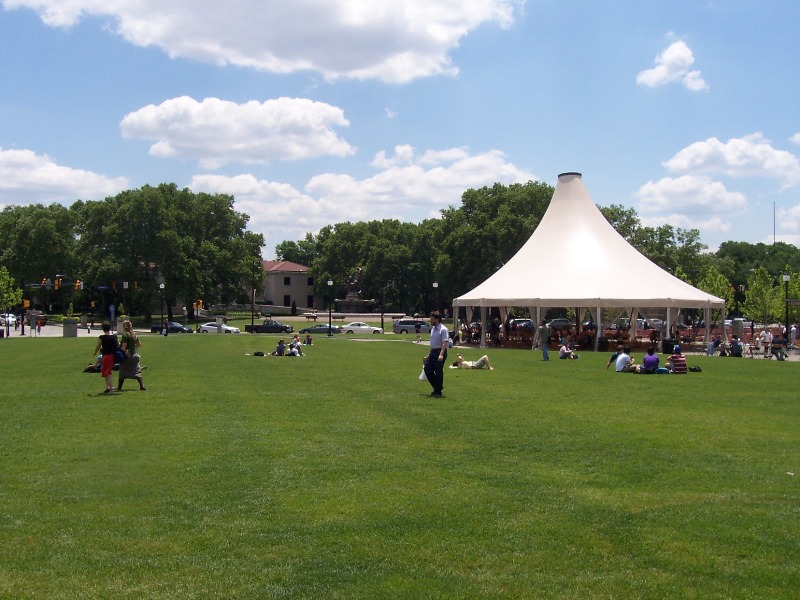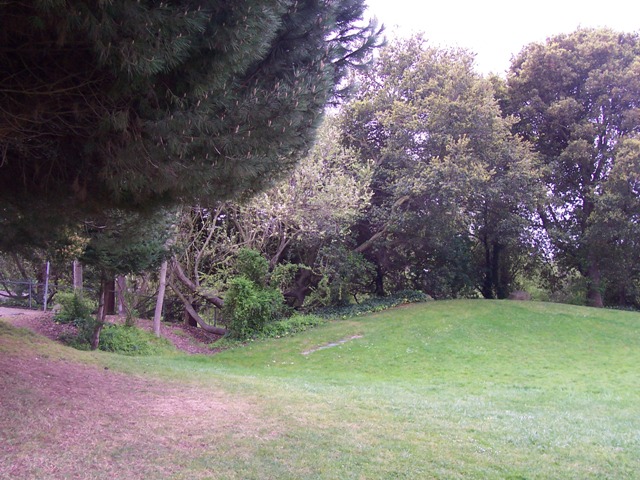Urban Green: Innovative Parks for Resurgent Cities is Peter Harnik's third book about city parks. His first was
Inside City Parks (2000) followed by
The Excellent Park System: What Makes it Great and How to Get There (2006).
 |
| Image: Schenley Plaza, Pittsburgh (removing parking) |
I think a better title for
Urban Green might have been Innovative Strategies for Creating Parkland in U.S. Cities. The 16 strategies presented by Harnik are the main contribution of the book and comprise the largest section (Part II: Finding Park Space in the City) of the book. In Part I: Of Cities and Parks, Harnik describes the standards of park provision. The conclusion is too short; I would have liked to read a comparative discussion of the approaches outlined earlier in the book.
 |
| Image: Rose Kennedy Greenway (under construction), Boston (decking highways) |
The most compelling chapters in Part I of
Urban Green are the first two: How Much Parkland Should a City Have? and The Different Kinds of Parks and Their Uses. In the former, Harnik questions the standard acres of parks to people standard using the following quote from Robert Moses:
"There is no such thing as a fixed percentage of park to population....Sensible, practical people know that [it] depends upon the actual problems of the city in question."
These "actual problems of the city" are, Harnik elaborates, geographical constraints, politics, culture, and economics. Population density is another confounding factor when trying to apply general standards to the diversity of cities in the U.S. Harnik advocates a weighted standard; comparing parkland in cities with similar density types.
 |
| Image: Ohlone Greenway, Berkeley (rail trails) |
Asking how much parkland a city should have begs for a typology of parkland. Harnik highlights a new classification system by planners in Portland, Oregon (of course!) that define parks along a continuum from "extreme sociability" to "extreme ecological purity" which results in three types of park spaces: people-to-people, people-to-nature, and nature-to-nature. This is an experiential system Harnik notes.
 |
| Image: Cesar Chavez Park, Berkeley (old landfills) |
I think the Portland system is an interesting proposition. My neighborhood has, what I considered to be, a good amount of parkland. When I look at it through the lens of the Portland classification, however, it has few people-to-nature spaces and even fewer nature-nature spaces. I would be willing to pay for dedicated nature-to-nature spaces in my neighborhood. How restorative to view these types of spaces! On to Part II.
 |
| Image: Bradner Gardens Park, Seattle (community gardens) |
Each strategy receives its own chapter in which Harnik describes the issue and provides process, funding, and programming details via actual projects. The 16 approaches to expanding city park systems are
- Buying It,
- Utilizing Urban Redevelopment,
- Community Gardens,
- Old Landfills,
- Wetlands and Stormwater Storage Ponds,
- Rail Trails,
- Rooftops,
- Sharing Schoolyards,
- Covering Reservoirs,
- River and Stream Corridors,
- Cemeteries,
- Boulevards and Parkways,
- Decking Highways,
- Closing Streets and Roads,
- Removing Parking, and
- Adding Hours Rather than Acres.
 |
| Image: High Line Park, New York City (rail trails -- overhead/trestle trail) |
The approaches are straightforward but Harnik's stories do address the challenges presented by each one. Sharing schoolyards, rail trails, landfill conversion, and (proactive planning of) community gardens are among the most difficult to implement. I have seen many of these approaches implemented with the exception of covered reservoirs and stormwater storage ponds designed as park space.
 |
| Image: Strawberry Creek Park, Berkeley (river and stream corridors) |
One suggestion for the next edition is to illustrate the examples presented in Part II with photographs or provide a web-based appendix of such photographs. Otherwise, I enjoyed reading
Urban Green and thank Peter Harnik and Island Press for my review copy. The book is an excellent case study of expanding a city's parkland providing strategies across several scales such as type of city, cost, degree of intervention. In addition to the approaches themselves, Harnik's cases provide accessible narratives of park planning in a wide range of U.S. cities.







Comments
- promotes exercise
- promotes environmentally friendly commuting
- links one park to another
- promotes family togetherness
- helps fight obesity
- less expensive to maintain than either roads or traditional parks
- often funded & developed by multiple entities such as cities, states, feds, rails-to-trails conservancy, lottery funds, parks departments, private individuals, volunteers, local clubs like bike or snowmobile groups, etc.
Rail trails get lots of use and are ideal in both rural and urban settings.
I, too, have written about Peter Harnik's valuable work, but under a pen name!
Great to have data-driven analysis of urban parks & design policies. Thanks Peter, and thanks Local Ecologist for alerting us to his latest contribution.
Here at the Center for Community Innovation, we have recognized the value of urban parks as "social seams." Does this come up in Vol 3?
HKP, UC Berkeley
Helaine, would you like to share your review of Peter's work with our readers?
Post a Comment
Thank you for commenting on this post!